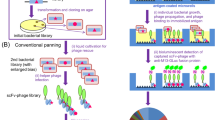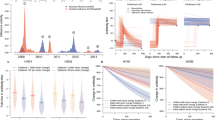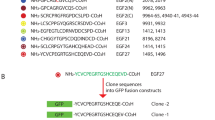Abstract
CUNNINGHAM and Fordham1 have used a modified version of the haemolytic plaque technique to show that antibody diversity can be generated after B cells have been stimulated to proliferate. They tested antibody plaque forming cells (PFC) against a mixture of sheep red blood cells (SRBC) from two different sheep and obtained three morphological classes of direct plaques: clear (the plaque radii for both types of SRBC were equal), sombrero (the plaque radii were different for the two types of SRBC), and partial (there was only one plaque radius). For the clear and sombrero plaques both types of SRBC lysed to some extent, while for the partial plaques only one type of SRBC lysed. Cunningham and Fordham used plaque morphology as an antibody specificity marker, that is, if two plaques were different in morphology this was taken to mean that the antibodies produced by the two PFC differed in their specificity for the two types of SRBC. They studied clones produced from single PFC and found in most cases that the plaques produced by the progeny were of the same morphological class, differing only by slight variations in their plaque radii. In 10 of the 93 clones observed, however, the morphology of the plaques differed within the clone. In 7 clones two different morphological classes of plaque were observed, and in the others all three classes. Cunningham and Fordham suggested that within a given clone the antibodies emitted by different cells can have different specificities.
This is a preview of subscription content, access via your institution
Access options
Subscribe to this journal
Receive 51 print issues and online access
$199.00 per year
only $3.90 per issue
Buy this article
- Purchase on Springer Link
- Instant access to full article PDF
Prices may be subject to local taxes which are calculated during checkout
Similar content being viewed by others
References
Cunningham, A. J., and Fordham, S. A., Nature, 250, 669–671 (1974).
DeLisi, C. P., and Bell, G. I., Proc. natn. Acad. Sci. U.S.A., 71, 16–20 (1974).
Jerne, N. K., Henry, C., Nordin, A. A., Fuji, H., Koros, A. M., and Lefkovits, I., Transplant. Rev., 18, 130–191 (1974).
DeLisi, C. P., and Goldstein, B., J. theor. Biol. (in the press).
Humphrey, J. H., Nature, 216, 1295–1296 (1967).
Handbook of Mathematical Functions (edit. by Abramowitz and Stegun), 375 (National Bureau of Standards, Washington, DC, 1964).
Conrad, R. E., and Ingraham, J. S., J. Immunol., 112, 17–25 (1974).
Author information
Authors and Affiliations
Rights and permissions
About this article
Cite this article
GOLDSTEIN, B. Effect of antibody emission rates on plaque morphology. Nature 253, 637–639 (1975). https://doi.org/10.1038/253637b0
Received:
Revised:
Published:
Issue Date:
DOI: https://doi.org/10.1038/253637b0
This article is cited by
Comments
By submitting a comment you agree to abide by our Terms and Community Guidelines. If you find something abusive or that does not comply with our terms or guidelines please flag it as inappropriate.



